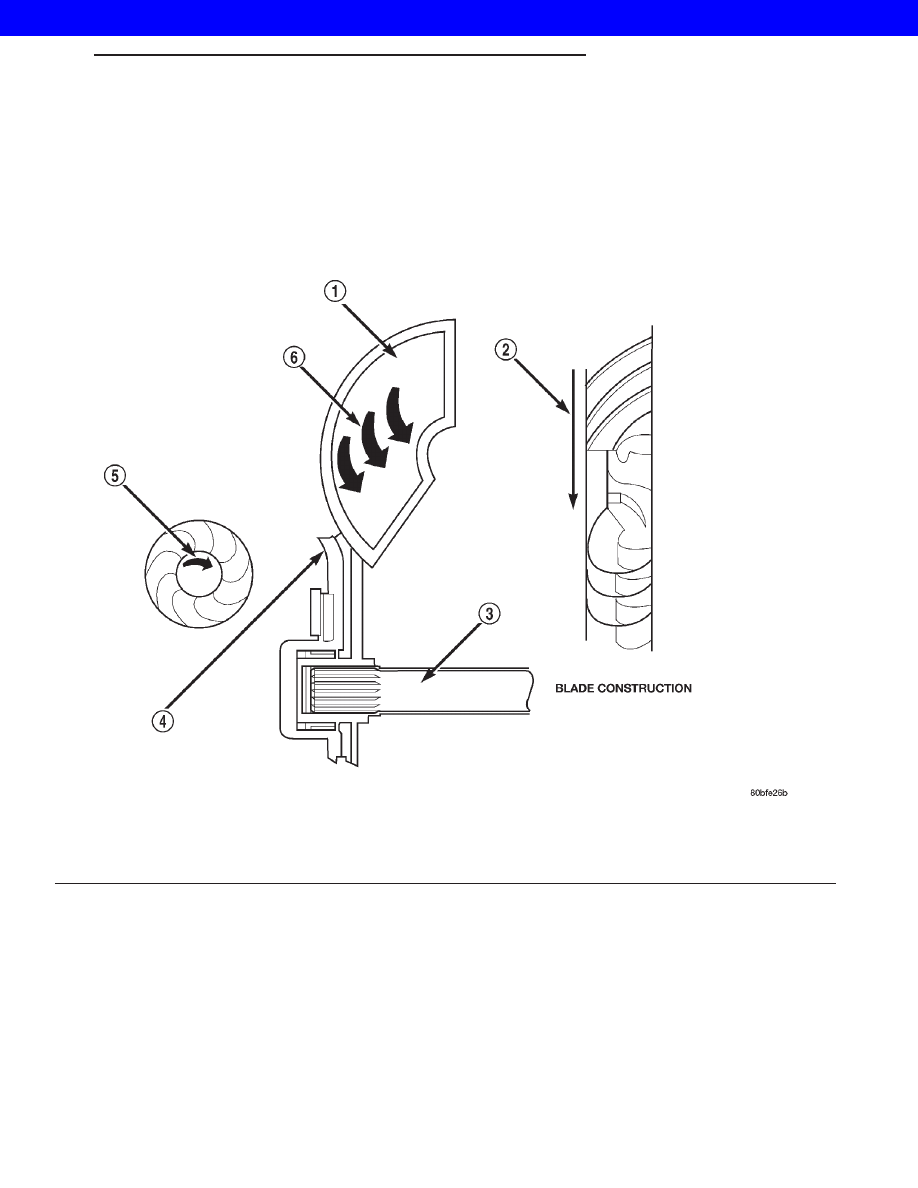Jeep Grand Cherokee WJ. Manual - part 916

TURBINE
The turbine (Fig. 252) is the output, or driven,
member of the converter. The turbine is mounted
within the housing opposite the impeller, but is not
attached to the housing. The input shaft is inserted
through the center of the impeller and splined into
the turbine. The design of the turbine is similar to
the impeller, except the blades of the turbine are
curved in the opposite direction.
Fig. 252 Turbine
1 - TURBINE VANE
4 - PORTION OF TORQUE CONVERTER COVER
2 - ENGINE ROTATION
5 - ENGINE ROTATION
3 - INPUT SHAFT
6 - OIL FLOW WITHIN TURBINE SECTION
WG
AUTOMATIC - 44RE
21s - 171
TORQUE CONVERTER (Continued)
2001 JEEP GRAND CHEROKEE